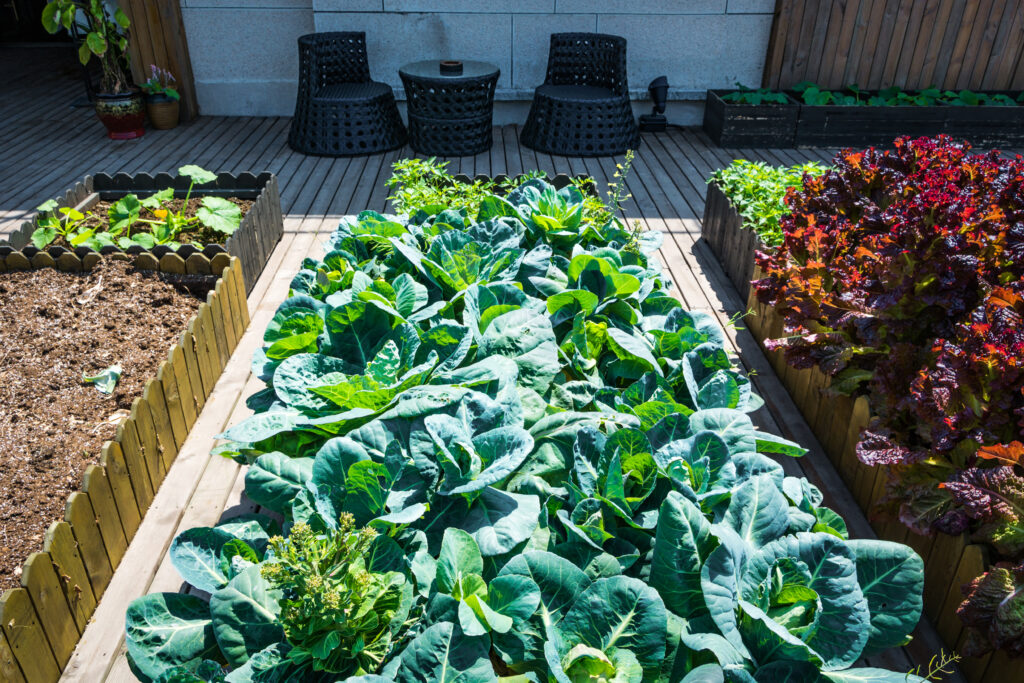Are you looking for a simple and effective way to grow organic vegetables and herbs? Raised bed gardening offers a solution that improves soil quality, reduces weeds, and makes gardening easier. This guide will walk you through building raised beds in organic gardening and share essential tips for maintaining them.
Choosing the Right Location and Materials

Location Matters
Before building your raised bed, find a spot with at least 6–8 hours of sunlight daily. Ensure the area has good drainage so your plants don’t get waterlogged. Position your bed where it’s easy to access for regular maintenance and harvesting.
Choosing Materials for Your Bed
Your materials should be sturdy, sustainable, and safe for organic gardening. Here are some good options:
- Wood: Untreated cedar or redwood is popular because it resists rot naturally.
- Metal or Stone: These can add a modern look, though they may need extra insulation in hot climates.
The bed height should be around 10-12 inches, which is suitable for most vegetables and makes it easier to work without bending.
Building Your Raised Bed: A Step-by-Step Guide
Step 1: Measure and Mark the Space
Decide on the bed size based on your space and needs. A 3-4 feet width allows you to reach the center easily from either side.
Step 2: Build the Frame
Assemble the frame using screws to secure the corners tightly. Place it in your chosen spot and ensure it’s level to prevent water pooling.
Step 3: Add Soil and Compost
Fill the bed with high-quality soil mixed with organic compost. This rich blend gives your plants essential nutrients, encouraging strong growth. Aim for a 50-50 soil mix and compost for best results.
Choosing Plants for Your Organic Raised Beds
With your raised bed ready, it’s time to choose plants. Here are a few that thrive in raised beds:
- Leafy Greens: Lettuce, spinach, and kale grow well in cooler weather and are easy to harvest.
- Root Vegetables: Carrots, radishes, and beets do well with loose, well-drained soil, making raised beds ideal.
- Companion Plants: Herbs like basil, mint, and marigolds can repel pests naturally, promoting healthy growth.
Rotate plants each season to prevent soil nutrient depletion. Crop rotation is key to a healthy, organic garden.
Maintaining Your Raised Bed Organically
Soil Health
Add compost or organic mulch annually to replenish nutrients and improve soil texture. Mulch also helps retain moisture and reduce weeds, making maintenance easier.
Pest Control
Use organic methods like companion planting and homemade insect sprays to keep pests at bay. Marigolds, for example, can deter aphids and other insects naturally. If you have a larger pest problem, try non-toxic sprays from garlic or neem oil.
Watering Tips
Raised beds may dry out faster than in-ground gardens, so regular watering is essential. Consider a drip irrigation system to keep the soil consistently moist without overwatering.

FAQs
1. What is the best soil mix for organic raised beds?
Mixing 50% high-quality garden soil and 50% organic compost is ideal for raised beds. This balance provides nutrients and good drainage.
2. How often should I water my raised bed garden?
Watering depends on climate, but raised beds generally require regular watering to keep the soil consistently moist. Drip irrigation is ideal for maintaining the right moisture level.
3. Can I grow all the vegetables in a raised bed?
Yes, most vegetables thrive in raised beds, especially root vegetables and leafy greens. Choose plants suited to your local climate for best results.
Conclusion
Raised beds in organic gardening are a practical way to grow healthy, organic produce with less maintenance. Following the steps in this guide, you can build a raised bed that fits your needs, choose plants that thrive, and maintain it organically. Get started today and enjoy a productive, beautiful, and sustainable garden in your backyard!
To learn more about organic gardening, keep visiting the top organic gardening blog.
